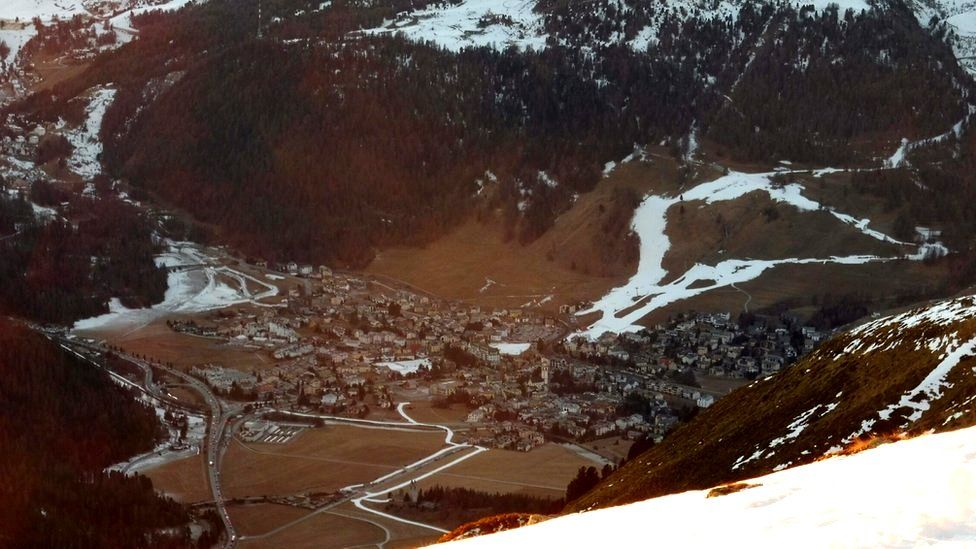Will snow rescue Swiss Alps after dry start to winter?
- Published

Snow is finally falling across the Alps, after one of the driest Decembers on record.
In the Swiss Alps, the last time so little snow fell over the Christmas period was in 1864, according to measurements taken by the Swiss Federal Institute for Snow and Avalanche Research.
For mountain resorts that do up to a third of their business over Christmas and New Year, this is a worry. While this December's glorious winter sunshine certainly showed off the Alps in all their splendour, many tourists arrive expecting to be able to ski.
Christoph Marty, a snow climatologist with the institute, understands why hoteliers have been gazing anxiously at the sky. "It definitely affects business," he says. A post-Christmas survey of ski resorts and lift operators by Swiss newspaper Tagesanzeiger showed that 56% of them expected to make losses in December.
The last three years have been a "row of Decembers without snow", says Mr Marty. While it may be too early to confirm a pattern, even the possibility that snow will not fall until after the festive season is a concern.
So most resorts across the Alps are turning to artificial snow. Snow cannons have been used for many years to patch up vulnerable sections of a slope, but in the last decade their use has increased dramatically.
Fifty percent of Swiss slopes can now be snowed artificially. In neighbouring Austria the figure is 70%. It is, as Christoph Marty points out, an expensive business.
"We need a lot of water for artificial snow, and there is a lot of consumption of power," he says. "This is one reason why lift tickets are not cheap."
Environmentalists have been watching the increased use of artificial snow with concern.
Swiss group Pro Natura says the creation of reservoirs, simply to provide water for snow cannons, is damaging to the mountain landscape, while the energy required to power all the cannons over a season would be enough to fuel a small town.
There is one big challenge to the nightly army of snow cannons: they cannot be used unless the temperature is below freezing.
That means resorts, even if no natural snow falls, must have cold weather in November to get their slopes ready for Christmas.
Buried snow and sawdust
For the lower resorts, and the cross-country ski runs in the valleys, this is problematic, and so some have turned to a new method: snow farming.
This involves creating tonnes of snow during the coldest months of January and February. Snow cannons are parked next to rivers in the valleys, water is pumped out of them and turned into vast mounds of snow, which is then buried in sawdust and stored, over the summer, until it is needed the following season.
"Up to 30% of it melts," says Christoph Marty. Nevertheless, more and more resorts, determined to guarantee snow in December, are turning to farming.
It has, this season, made for some odd pictures: ribbons of snow on the ski slopes winding their way down through green fields.
The sport of skiing developed, of course, out of the natural winter conditions in the mountains.
But that was before winter package holidays: the first skiers, over a century ago, did not expect guaranteed snow from November to April.
Today the winter sports business is worth billions, and many mountain communities depend on it. Creating the right conditions for skiing is no longer a matter for the weather gods, it is a high-tech industry.
For anyone who still believes the snow beneath their skis simply fell from the skies, the truth is far more complicated than that.
- Published6 January 2016